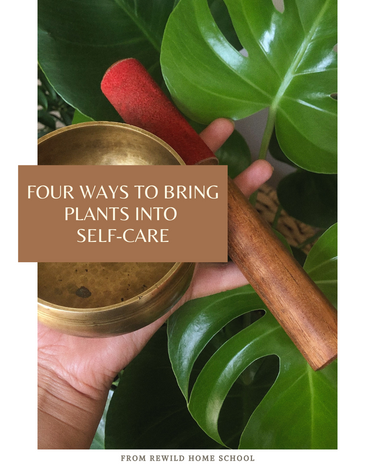
Common Houseplant Pests and How to Deal With Them
This article will elaborate on our approach to common houseplant pests, and will not be a technical article because we are not entomologists! Mainly, we will touch on the common reasons we get pests and what products and methods we find the most effective, based our personal experiences.
In our opinion, there are two categories of pests-- not a problem for the plant but annoying to you; and then a real problem that is ultimately detrimental to the plant.
Pests that won’t harm your plant (even if they annoy you)
Fruit flies, fungus gnats, mosquitos, and spiders are generally common and anyone who has more than three houseplants will see them from time to time. Are they a problem? Not really. They have just found a home in your plants soil and you need to make that environment less hospitable as a host for these bugs. The good news is these bugs won't eat your plant but they will spread with vigor if you aren't proactive.
Where do they come from? There isn’t one specific way they get into your home, but so long as you don’t live in an airlock container they are getting in! On our food, through open windows and doors, our clothes, etc etc. Bugs love decomposing stuff, they love moisture, and likely your plants’ soil is holding moisture which is attracting them from all corners of your home.
The preventative approach for these types of bugs is pretty easy. Add some extra perlite or vermiculite to your soil before you pot your plant. These materials will make your soil extra coarse and well-draining so that water doesn't sit in your soil. Make sure your pot has a drainage hole. When you water, drench your plant and watch that water run out of the pot. Empty your tray of excess water and make sure not to have any standing water for extended periods of time (more than 10-15 mins).
In general, these solutions apply to lots of common houseplant problems. Most issues start with not giving your plant an appropriate amount of light, then leads to overwatering, then the pests move in. If you do happen to have a pot without a drainage hole, be sure to limit the quantity of water you give your plant on watering days. If your pot doesn’t have a drainage hole and you’re not sure how much water to give it, feel free to contact us for guidance.
Here’s what to do when you have a Category 1 bug problem:
I've refined this method in my own home as I've seen quite a lot of gnats and fruit flies. Say it with me hydrogen peroxide, hydrogen peroxide, hydrogen peroxide. The great part about hydrogen peroxide is it's an antiseptic so if you have anything else funky in your soil it will clear it up too. I take 3% hydrogen peroxide solution from CVS and I put 1-part hydrogen peroxide and 6 parts water into a spray bottle. I then spray the soil thoroughly with the solution. I also don't water the plant and make sure the soil really dries out after the application. Then I wait... After a few days if there are still some bugs, I reapply with a spray bottle. This almost always does the trick for me. We also recommend those yellow sticky traps to customers as a preventative as they are super effective at capturing adults so they can’t continue to reproduce. Worst case scenario if it is really bad I end up repotting the plant outside and voila Category 1 is taken care of!
We will add that if you live in DC (or any other hot, humid, or otherwise swampy place) gnats, midges, mosquitos and just bugs in general are a part of life! Even if you do everything right you will likely always have to deal with them, especially in the summertime! So have your solutions at the ready but don’t beat yourself up if they come back every year or you can’t completely eliminate them.
Pests that will harm your plants and can cause damage
Category 2 bugs are aphids, mealy bugs, spider mites, thrips, and scale. I'm not going to sugar coat this for you: if you have one of these bugs it is an uphill battle. Can you win the battle? Yeah, sure. Is it worth winning? Not always. I will be the first to admit I have thrown away many plants at the site of these bugs because I just wasn't in a fighting mood. There are also varying degrees of these infestations, so it’s a good idea to check your plant often so you can catch them early on!
The biggest difference between these pests and the ones mentioned above are that these pests live ON your plant. The bugs in the previous section generally live in the soil. When bugs live on your plant, it means the bugs are having breakfast, lunch, and dinner courtesy of your beautiful houseplant all day and night.
For Category 2 identification of the exact bug is fairly easy, as the bugs look much different. My favorite resource for this is google (very inventive I know) or just shoot us an email. Our process and treatment for all of them is the same so I'm going to save you from having to read my personification of each bug. I am going to shout out aphid's though because I've never actually defeated them. They look like mini mini grasshoppers and can fly. They are the worst and if you have aphids, I'm really sorry. (My business partner managed her aphids by bringing the plant to an outdoor space and treating it with live ladybugs, which can be purchased at an outdoor garden shop or hardware store).
Category 1 is all about hydrogen peroxide and eliminating the warm, wet environment so the bugs don’t move in. Category 2 is more complicated, you’ll need a few supplies, based on the severity of the infestation: rubbing alcohol (70% concentration), neem oil, insecticidal soap, castile soap, a spray bottle, an old toothbrush, and paper towels. There are some other insecticides that you can substitute for neem oil and insecticidal soap that are probably fine, but we like these because they’re safe and organic.
All of the bugs in Category 2 you can see with your eyes which is going to be important in the treatment. This treatment is a process and you can't really skip any steps so I'm going to go ahead and bullet point it.
What to do if you have a serious pest infestation
-
Quarantine your plant
-
Swipe off all pests that you see with rubbing alcohol on a Q-tip
-
Scrub the affected areas with your toothbrush (this is most helpful with scale)
-
Wipe down the areas you scrubbed very thoroughly with your Castile soap, neem, or insecticidal soap mixture(castile if the infestation isn’t bad, neem if its moderate, insecticidal soap if its BAD)
-
If any of the bugs fall on the soil spray the soil (or cover the soil with a paper towel so this doesn't happen)
-
Wait a day or two and then rinse and repeat these steps
You are looking at a minimum of two times of going through these steps. Likely it is going to be more 3-4 times but it really depends at what stage of the infestation you started tackling the problem. Remember that you still want to make sure you resolve what caused the pest in the first place, so if the plant isn’t getting enough light, move it somewhere brighter! Usually plants on the mend like more light anyways.* Make sure it’s not sitting in standing water or overwatered. Make sure it’s clean! If your plant has a ton of dust on it, it is suffocating! This is usually what causes pests if you have a plant for years and then all of a sudden its covered in bugs.
Dealing with a pest is stressful to you and to the plant, so keep in mind that your plant might lose some leaves or have yellowing because of the treatment. Any of this is going to be better than a dead plant so just ride it out!
*Note that if you use neem or insecticidal soap the plant cannot be in direct sunlight until it’s washed off a few days later. Otherwise it will burn and just stress the plant out even more.
After writing this it occurs to me that when I say bugs are annoying, it's not fully true. They are really treatable (other than aphids) and with some patience, any pest problem can be overcome. The occasional bug problem doesn't even come close to the fun of having lots of plants in your home, so don’t give up!
Be well,
Joe



Leave a comment
This site is protected by hCaptcha and the hCaptcha Privacy Policy and Terms of Service apply.